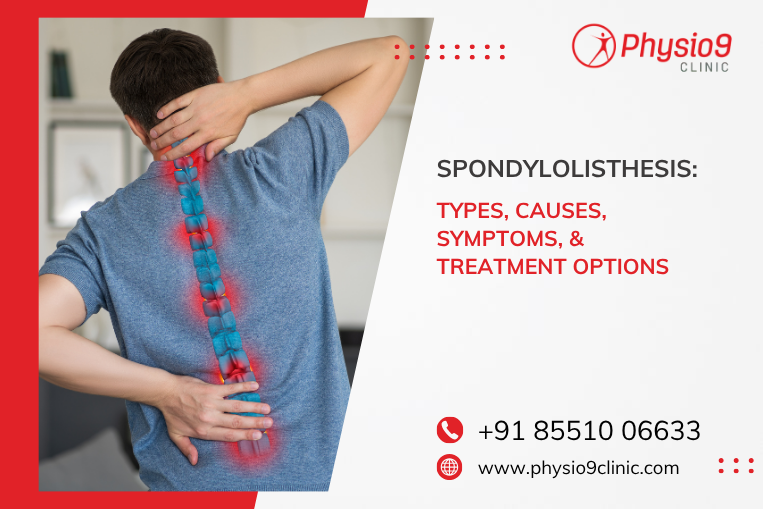One day, you're bending down to pick up a dropped pen, and the next, your back feels like it's auditioning for a horror movie. If you’ve been dealing with nagging lower back pain, stiffness, or a strange pulling sensation in your legs, you might’ve come across a rather twisty word — spondylolisthesis. It may sound like a spelling bee final round word, but for many, it’s a real pain — literally.
Let’s break it down in a way that doesn’t make your back hurt even more.
So, What Exactly Is Spondylolisthesis?
Spondylolisthesis is when one of the bones in your spine (called a vertebra) slips out of place, usually forward, over the bone below it. Think of it like one tiffin box in a stack sliding out of alignment. That’s your spine trying to be rebellious.
Depending on how much the bone has moved and why, this condition can be mild, moderate, or serious — but the good news is, most cases are treatable with the right care and time.
Types of Spondylolisthesis
Just like our Bollywood movies have different genres, spondylolisthesis too comes in a few varieties:
- Congenital: Present from birth, where spinal bones didn’t form properly.
- Isthmic: Caused by a small fracture in a part of the vertebra, often seen in athletes.
- Degenerative: The most common type in adults, due to wear and tear.
- Traumatic: Caused by a sudden injury or accident.
- Pathological: When bone diseases or infections cause the slippage.
- Post-surgical: Rare, but sometimes occurs after spinal surgery.
For more information, book an appointment with our expert at Physio9 for spondylolisthesis treatment in Pune.
Why Does It Happen?
There’s no one-size-fits-all answer, but some common causes include:
- Overuse from sports or activities involving repeated spine movements
- Age-related degeneration (your spine, like your mobile phone battery, can start to act up over time)
- Genetics — if someone in your family has it, your chances go up
- Accidents or trauma
- Birth defects
Athletes like gymnasts, cricketers who dive dramatically on the field, or people who do heavy lifting for work (or to impress at weddings) are more at risk.
Common Symptoms to Watch Out For
Not everyone feels the same pain, but here’s what people with spondylolisthesis usually report:
- Lower back pain that worsens with activity
- Stiffness in the back
- Pain or tightness in the hamstrings
- Trouble walking or standing for long periods
- Tingling or numbness in legs (when nerves get pressed)
How Is It Diagnosed?
Usually, doctors will ask about your symptoms, do a physical exam, and recommend X-rays or MRI scans. It’s not about overcomplicating things — they just want to see how far the vertebra has slipped and if any nerves are being affected.
A spine specialist will grade the slippage on a scale from 1 (mild) to 5 (severe). Grade 1 and 2 are common and usually don’t need surgery.
Treatment Options You Can Rely On
Treatment depends on the severity, type, and your daily activity level. Here’s what’s usually recommended:
Non-Surgical Methods:
- Rest and Activity Modification: No, this doesn’t mean lying in bed and binge-watching serials forever. But give your back time to heal.
- Physical Therapy: Strengthening exercises for the core and back muscles can make a huge difference.
- Pain Relief: Anti-inflammatory medicines or even prescribed painkillers if things get too rough.
- Back Braces: Used for support in some cases, but not a long-term solution.
When Surgery Is Needed:
In severe cases or when non-surgical methods don’t work, spinal fusion surgery might be suggested to stabilize the spine.
If you're searching for spondylolisthesis treatment in Pune, look no further than Physio9 Clinic. We offer both conservative and advanced surgical care depending on your case.
Wrapping It Up Without Twisting Your Back
Spondylolisthesis may sound intimidating, but it’s manageable with the right care.
- Knowing the type and severity helps shape the treatment plan.
- Symptoms vary — don’t wait for your body to scream; even subtle signs need attention.
- There’s a range of treatment options, and most people recover without surgery.
- A good support system (and a better mattress!) can make recovery smoother.
And as one wise doctor once said, “Your spine supports your entire being. Treat it like a VIP, not an afterthought.”
So, if your back has been sending you distress signals lately, don’t ignore it. Whether it’s early signs or a confirmed diagnosis, understanding your options — and acting early — can help you get back to moving freely, one step at a time.
Schedule a consultation with our expert at Physio9 for spondylolisthesis treatment in Pune.







